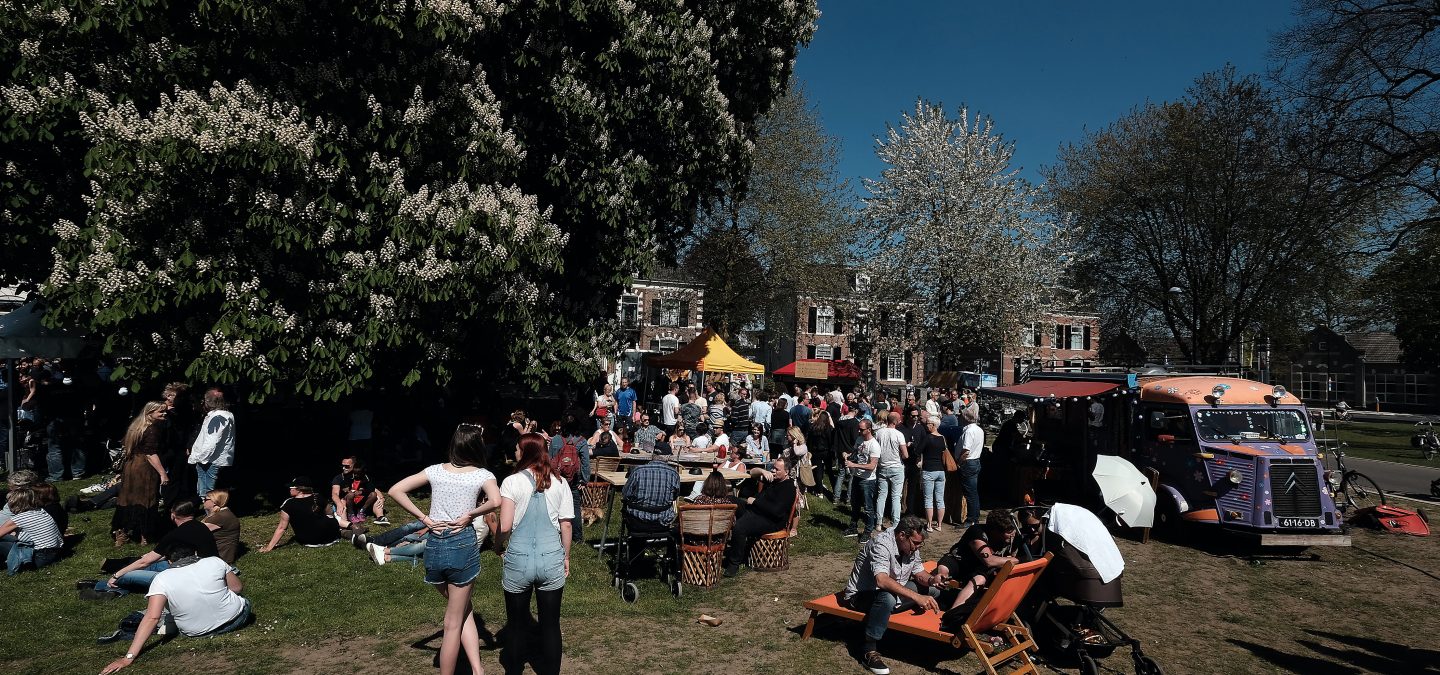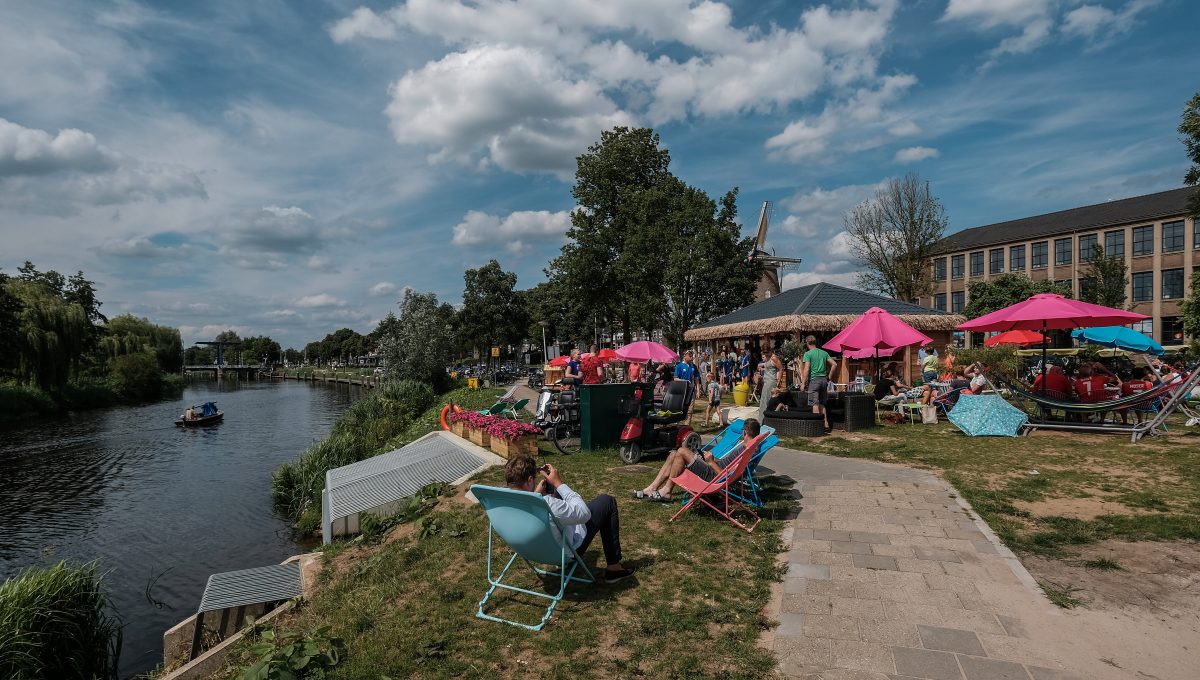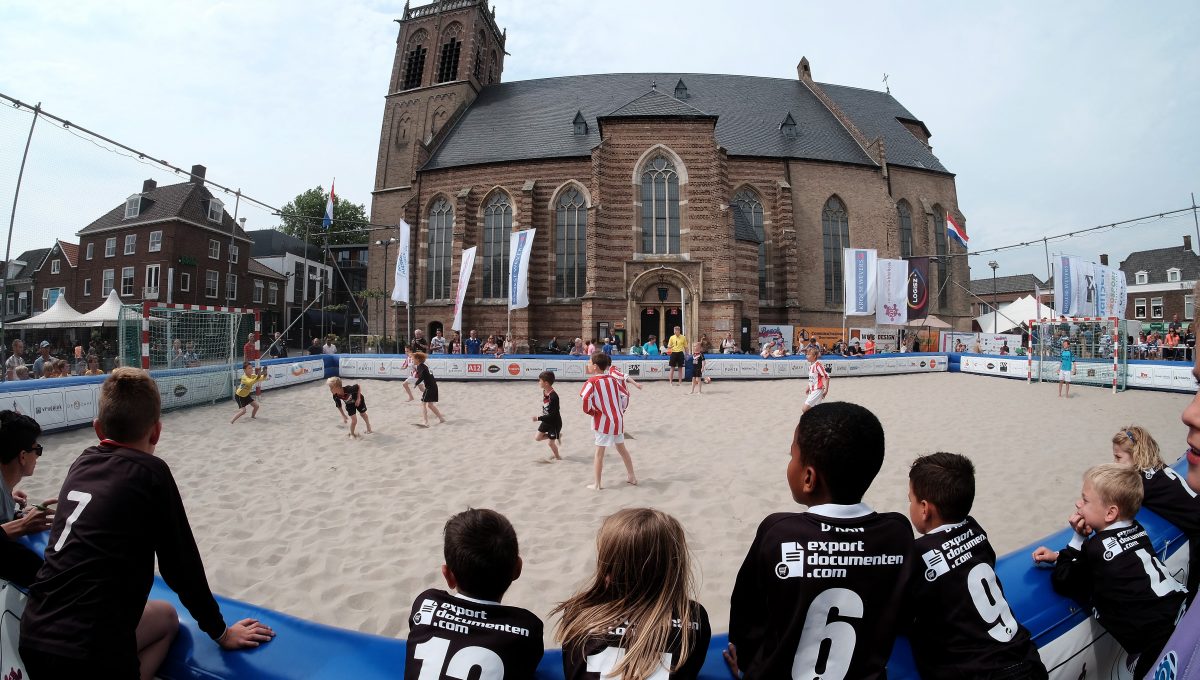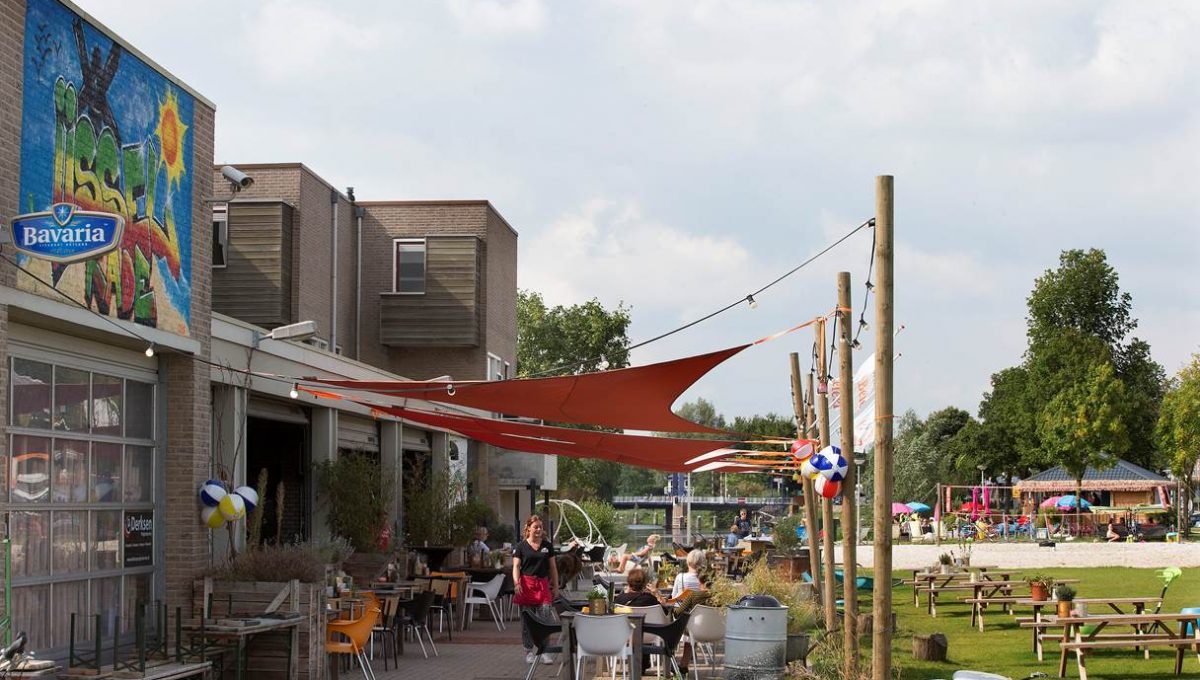
Keep up with our latest news and projects!

Doetinchem has a clear ambition: become the hospitality capital of the Achterhoek region. ‘Doetinchem already has the amenities,’ says councillor Peter Drenth. ‘We serve the entire Achterhoek, about 200,000 people. But they only come to the inner city when there’s something to experience, when the inner city is more than just an accumulation of shops. It’s also about emotion and perception.’
The aim is for the inner city to become a hospitable and dynamic place. Another priority is to strengthen perceptions of the Achterhoek in the inner city and connect the Oude IJssel to the city centre. Different parties are working on this aim in a variety of ways. Examples include better marketing, finding solutions for cycling in the inner city, organising events, making the city greener and setting up a food hall for entrepreneurs in the former V&D building. ‘Together with residents and entrepreneurs, we’re creating all kinds of incentives,’ explains Bart Teunissen, project manager for the inner city. ‘We’re investing heavily in the core shopping area, but also on the edges of the inner city. These two things go hand in hand.’
 ©️ Gemeente Doetinchem
©️ Gemeente Doetinchem
A nice example is the approach to Terborgseweg, an important approach road to the centre. An agreement was reached with residents and entrepreneurs to make this a green avenue. ‘On the side of the road where there are a lot of retail businesses, we’re going to substantially widen the sidewalks, creating an attractive approach route from the station to the inner city,’ Drenth says. ‘We’re therefore also creating space for shopkeepers. The baker can put some tables and chairs in front of the store where customers can sit comfortably.’
‘During the municipal elections in 2014, the plans for the inner city started to accelerate,’ Drenth says. ‘During an election debate we said that we needed an Inner City Plan of Attack to improve the inner city. The point of departure was to retain the good things that we already have and improve the things of lesser quality. The shopping area called De Veentjes was one of these places. This outdated shopping area is situated just outside the centre. In recent years, an increasing number of shops were forced to shut down, causing vacancy to rise dramatically. What remained were a few snack bars and a stray shop. In light of the aim to make the inner city more compact, residents, entrepreneurs, building owners and public servants are now working together to transform this shopping area into a residential area. In recent months, the municipality organised several work meetings with everyone involved in the area. Within three months they came up with a detailed plan that will make it possible for people to live in the plinth and which will redesign the outside space.
‘Our strength is that we are constantly improving the way we handle temporary transition situations,’ Teunissen says. ‘As a result, these aren’t small, individual projects. But they dovetail with the broader development of the centre, which we are experiencing together with the city’s residents and entrepreneurs. Mixed teams of residents, entrepreneurs, building owners and public servants are working throughout the city on making it resilient for the future.’
‘We all agreed that we shouldn’t develop the plan for the improvement of the inner city at the university or at city hall,’ says professor by special appointment Gert-Jan Hospers from Radboud University.
‘Instead, we devised the plan with people in the inner city while walking through it. We asked residents and visitors to show us a place that they’re extremely proud of and a place they thought could be improved. As we walked through the streets, people shared their vision of the inner city.’ Based on this input, Gert-Jan Hospers and two of his colleagues wrote the ‘Doetinchem at Eye Level’ strategy, which is the foundation for the long-term process of cooperation with residents, entrepreneurs and other partners in the inner city.
This new approach also fits in with the municipality’s new role. ‘The municipality is no longer the key player in the city, but one of many players,’ Drenth says. ‘The municipal council fully supports this approach. Even before decisions had been made about what direction to take, the council pledged a structural amount of 1 million euros a year to invest in the inner city. ‘On condition that the partners in the city co-financed the plan,’ he says. ‘As the municipality, we will contribute up to half of the amount. The other half has to come from the city.’
A wish often expressed by inhabitants is to involve the Oude IJssel more with the inner city. This already began to crystallise when three young couples took the initiative to develop a new spot along the river, where people can stay and have a drink and a bite. ‘In light of the Inner City Plan of Attack it made absolute sense to offer space to this initiative,’ Drenth says. ‘Old garage sheds of the police are being used: their rolling doors can be opened and a kitchen has been installed in one of them. Outside, there are beach chairs and umbrellas, and the local ice cream vendor set up a tent there. It’s a simple and extremely popular place that people love to visit.’
 ©️ Gemeente Doetinchem
©️ Gemeente Doetinchem
 ©️ Gemeente Doetinchem
©️ Gemeente Doetinchem
‘That’s also because it’s a place where people can combine relaxation with amenities for eating and drinking,’ Teunissen adds. ‘People go there on Sunday morning to do yoga and drink a cup of coffee. They play football there and take their children along. People can take off their shoes and sit by the water. Everyone has embraced this place.’ In the spring of 2016 the municipality built a strolling jetty where people can sit and enjoy the water when the weather’s nice. There are plans to build footpaths around the Oude IJssel, as well as a footbridge over the river, and people have expressed the wish for more recreational options along the water and a quay where they can sit.
The first three years of the Inner City Plan of Attack are history now, but the end is nowhere in sight. The basis of a long-term partnership between the authorities and residents and entrepreneurs has yielded many excellent projects, initiatives and new energy. Compared to a few years ago, entrepreneurs have a completely different attitude about everything that’s happening in the inner city. ‘Entrepreneurs are now bearing part of the risk in developments,’ Drenth says. ‘We’ve also noticed that public servants are approaching their work differently. They’re now contributing their expertise and skills to the discussion instead of just making sure that initiatives comply with procedures and rules. They’re also engaging with residents and entrepreneurs in a much different way, because they’re members of the mixed teams. This joint approach increases support, which ultimately accelerates plans.’
Interested? Join The City At Eye Level and share your story!
Discover moreThese days, people lie resting in their beach chairs along the Oude IJssel in Doetinchem with their feet in the sand and a drink in their hand. It’s one of the new places in the inner city of Doetinchem, and owes its existence to the ‘Inner City Plan of Attack’. The municipality works closely with residents and entrepreneurs in the inner city on this plan. The point of departure is no small individual projects, but a long-term process of cooperation between authorities, residents, entrepreneurs and other parties. The ultimate aim is to give back the inner city to residents and entrepreneurs.